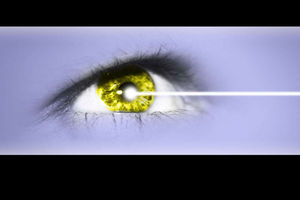The gradual loss of vision

A patient being screened for potential glaucoma case in one of the health facilities.PHOTO|COURTESY
What you need to know:
- As the nerve fibres are destroyed, blind spots develop and the entire nerve is damaged, and then there is complete blindness in that eye.
- The name given to this disease where increased intra-ocular pressure (pressure inside the eye) damages the optic nerve is glaucoma. Glaucoma is the leading cause of blindness in persons over 60 years old, but the blindness can be prevented with early treatment.
Dear doctor,
My mum, 64, has been having problems with her eyesight. She was told that the pressure in her eyes is high. How is this possible yet she does not have night blood pressure? What causes it? Does it have treatment?
Dear reader,
The eye has various components including two types of fluid that give it shape by maintaining the pressure inside the eye. The first type of liquid is called aqueous humor and it is clear. It is found between the cornea and the lens (the front part of the eye), and the second type is vitreous humor, which is a thick gel-like fluid found between the lens and the retina (the back of the eye). The aqueous humor nourishes the eye and gives it shape. It is produced by the eye and a similar amount of what is produced per day is removed from the eye through a drainage system.
If there is excess aqueous humor produced or a blockage in the drainage system, there is a buildup of fluid, increasing the pressure inside the eye. This high pressure can damage the optic nerve, which starts at the back of the eye. This is the nerve that allows us to see. The nerve is made up of small nerve fibres. As the nerve fibres are destroyed, blind spots develop and the entire nerve is damaged, and then there is complete blindness in that eye.
The name given to this disease where increased intra-ocular pressure (pressure inside the eye) damages the optic nerve is glaucoma. Glaucoma is the leading cause of blindness in persons over 60 years old, but the blindness can be prevented with early treatment.
There are several types of glaucoma: open angle glaucoma, which develops because of “clogging” of the drainage system. It develops slowly over time and usually has no symptoms until much later in the course of the disease. There’s closed angle or angle-closure glaucoma, which occurs when another part of the eye (the iris) suddenly blocks the drainage angle, causing the pressure to rise very quickly and thus causing eye pain, headache, nausea, seeing halos, blurred vision and can quickly cause blindness. There’s also normal pressure glaucoma, where there is damage to the optic nerve despite the intra-ocular pressure being within normal limits.
Someone has a higher risk of developing glaucoma if they have close family members who have/had glaucoma; or if aged above 40 years; or if they are long or short sighted; if they have had an eye injury; or if they have problems with the cornea or the optic nerve. There is also a higher risk of glaucoma for persons who have diabetes, high blood pressure, poor circulation and other chronic illnesses. Long term use of steroids also increases the risk of developing glaucoma.
High intra-ocular pressure and glaucoma should be treated by an eye specialist (ophthalmologist). While damage from glaucoma cannot be reversed, further damage can be prevented using medication or surgery. Eye drops may be used to reduce the amount of aqueous humor being made or to improve the drainage. Surgery may also be done to improve the drainage and/or to reduce the pressure from the other part of the eye.
Dear doctor,
What is the link between eye twitching and headaches? Should I be concerned?
Dear reader,
Eye twitching is movement or spasms of the eyelids. There are different types of twitching. One type of twitching, which is rare, is benign essential blepharospasms, which starts as frequent blinking and can lead to the eyes being squeezed shut and can be quite severe. It may be caused by a problem with the nerves. Another type of twitching is hemifacial spasm, which affects one side of the face. This is may be caused by a blood vessel pressing on the facial nerve.
The most common type of twitching is called myokimia, where the twitching is mild, lasts for a short while, resolves on its own and recurs. There is no known cause for this, but it may be triggered by bright light, eye strain, eye irritation, fatigue, alcohol intake, smoking, wind, air pollution, excess caffeine intake and stress. Other conditions that can cause eye twitching include light sensitivity, inflammation of the eyes, some nerve disorders and some medications.
Recurrent headaches may be tension headaches, migraine headaches or cluster headaches. They may also be caused by an underlying illness. Some of the triggers of eye twitching can also trigger headaches such as stress, fatigue, eye strain, bright light, air pollution and nerve disorders. Eye disorders may also trigger a headache.
For myokimia, the twitching usually resolves on its own with rest, reduction of caffeine and stress relief. For the other types of twitching, it is advisable to be reviewed by an eye specialist (ophthalmologist). Any other eye problems should also be treated by a doctor.
For recurrent headaches, if they cannot be controlled by avoiding the triggers and simple painkillers, then it is advisable to be reviewed by a doctor. This is because there are many possible underlying causes of headaches. Once the underlying cause is identified, the specific treatment will be given.
Send your questions to [email protected]




